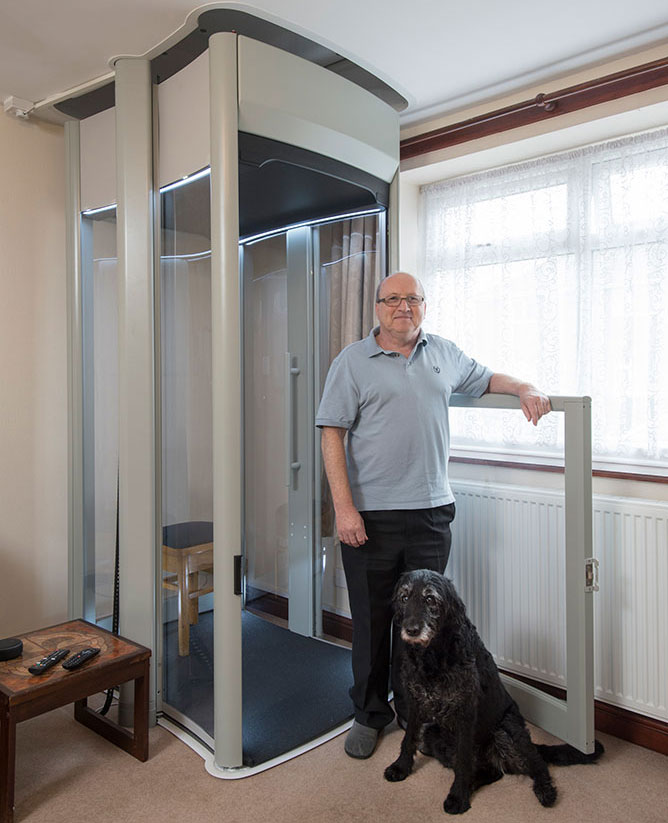By Stuart Barrow – Occupational Therapist

As Occupational Therapists we work within numerous areas, but the common goal is to create purposeful occupation through therapeutic intervention. Often, we have to balance the ability to provide reablement with the limitations of the services we have available to us. We can look at equipment, aids and adaptations to facilitate independence or provide independence following a reablement programme.
The Role of Reablement Within the NHS
Reablement is an increasingly important part of the NHS. As health and social care costs increase and the UK population ages, the overall aim is to enable people to live independently in their own homes for as long as possible. Over the last ten years, the UK Government has made a substantial investment in reablement services through the NHS which has been proven to promote positive health and wellbeing, reducing hospital admissions, re-admissions, and delayed discharge. A recent report by Agile Ageing Alliance states that the right home adaptations can delay a move to residential care by four years, limiting pressure on the care system. Simple home modifications can also help reduce the falls that need medical treatment by 26%. This is estimated to lead to annual savings of £500m to the NHS and social care services.
The Benefits of Reablement
NHS and social care reablement services are there to help your clients regain confidence after an injury, illness, or acquired disability. Often referred to as intermediate care or aftercare, these services are designed to assist your clients to restore the skills needed to carry out normal daily living activities independently. Reablement is designed to create positive change based upon individual goals – helping people to regain confidence through positive health and wellbeing. Reablement is a useful resource and assessment tool in order to maximise someone’s potential in the occupations of their choosing, from making a cup of tea to getting dressed.
Home Adaptations and Equipment
Reablement is split into two categories – restorative, which includes the learning or re-learning of behaviours and skills, designed to help improve motivation and confidence, and secondly, compensatory – which includes adapting the home to ensure safety and mobility. Adapted equipment can include grab rails, stair rails, steps, ramps, bathrooms adaptations, stairlifts or home lifts. It can also include the use of assistive technology such as sensors, activity monitoring, and personal alarms.

Reablement Assessment and Process
The reablement process begins with an assessment which will consider your clients mobility, skills, physical strength, and the ability to perform basic tasks such as bathing or moving safely around the home. The reablement period can be relatively short (usually around six weeks), so the planning for what happens after reablement ends should begin at the start of the process. As part of the reablement team, you will discuss ongoing care and treatment with your client. If your client is likely to still need further support accessing different levels of the home despite having a reablement plan, an early referral for home adaptations is imperative and can make a reablement plan successful.
Benefits of a Home Lift
A home lift can play an important part in the reablement process. Having control over moving around the home freely and safely has significant benefits for your client’s confidence, self-esteem, mental health and wellbeing. It means your client won’t need to ask friends, family or carers to assist them to move between floors. This can be hugely important when maintaining personal relationships, self-confidence and self-esteem. A home lift also has additional benefits; for example, it can be used to move heavy or difficult to carry items such as washing which in itself, will assist your client to maintain normal daily activities.
Future-Proofing the Family Home
A home lift can also be beneficial to clients whose condition fluctuates or may worsen, such as Multiple Sclerosis (MS) or Chronic Fatigue Syndrome (CFS) otherwise known as Myalgic Encephalomyelitis (ME). An MS relapse can mean climbing the stairs may not be possible, and ME can be debilitating for days or weeks. If a wheelchair user has a stairlift and can usually transfer, this may not be possible during a relapse, therefore the stairs/stairlift become unusable. However, they may be able to safely self-propel/be assisted into a home lift. Unlike a stairlift, the installation of a home lift also means use of the stairs is not compromised. This can be beneficial to those who choose to use the stairs when feeling well and also to other members of the household, especially children, or those with restricted mobility.


